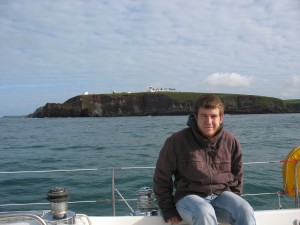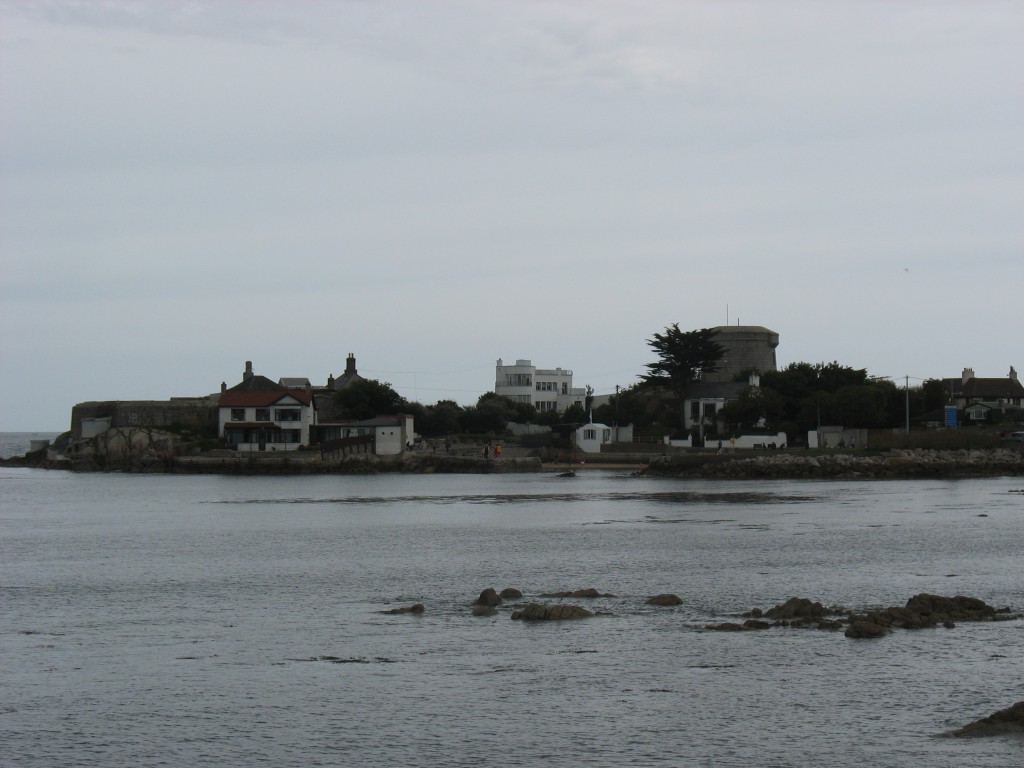
Summary: Milford Haven to Dun Laoghaire. 114.6 miles in 22 hours and 5 minutes. An unremarkable passage with relatively little wind. We did manage to sail for a few hours, but ended up motoring for the vast majority of the passage with too little wind to sail.
We left Milford Haven just after 7am to catch the start of the ebb down the harbour and had a good blast of tide out between Skokholm & Skomer islands and Grassholm. A few minor overfalls, but nothing much and a beautiful run between the islands. We did then manage to sail for a few hours with a light northerly, but after a few hours that died and so on went the donker. It then stayed on for the next fourteen hours or so. We headed south of the Arklow Bank and the sun setting over the hills behind Arklow was stunning. The night was then really clear with a great view of the milky way. The phosporescence was remarkable as well – very luminous in nature. A fisherman’s buoy with the tide running past it looked like it had a glowing green ring around its base. Phosphorescence is energy being released slowly in the form of light. The phosphoresence in water is mainly due to dinoflagellates which are a form of marine plankton and they emit the light when disturbed in the wake of the boat. Estimates suggest that there are around 1700 different species of marine dinoflagellates, so goodness knows which we saw in the water!
In the evening we also went past three flippers flopping in the water. At first we thought it might have been turtles, but it seems more likely that they were basking sharks. They apparently have floppy dorsal fins and that is exactly what these looked like. Watching a BBC documentary on YouTube has convinced me that these fins were what we saw. This seems even more likely given that the Isle of Man and Northern Irish Sea is well known for sightings between May and September. Basking sharks are harmless and just feed on plankton. They must eat considerable amounts of it as generally adult basking sharks are around 20-26 foot long and can weigh around 5 tonnes on average. While they feed on the surface during the summer, in the winter they move to depths of around 3,000ft to feed on deep-water plankton species.
Once past Arklow and Wicklow, the tide held longer than we expected and so we even slowed down a little for an hour or so to be able to enter Dun Laoghaire in the light. We eventually arrived after about a 22 hour passage. It is an easy harbour to enter and very sheltered once inside as the marina is inside breakwaters inside the main harbour breakwaters.
Dun Laoghaire is a nice town and in the morning we walked round to Sandy Cove. The main claim to fame of Sandy Cove is the Martello Tower. these towers were built as defensive positions during the Napoleonic Wars and James Joyce lived for a time in the tower at Sandy Cove and he set the opening scene of Ulysses there. The tower is now a James Joyce museum and is set up to resemble its 1904 appearance. The tower is beside the Forty Foot bathing place which was originally a sea bathing place for gentlemen only. Times have moved on though and mixed bathing is now allowed, though the water didn’t look very inviting today when we went past!
See the Dublin picture gallery for more pictures.


As you move further north you might see more basking sharks. Several are being satellite tracked off the west scottish coast. It’s still early days and more sharks still be be tagged. Page includes link to Marine Conservation Society page for reporting Basking Shark sightings (and other species they are interested in).
Regards
Ian